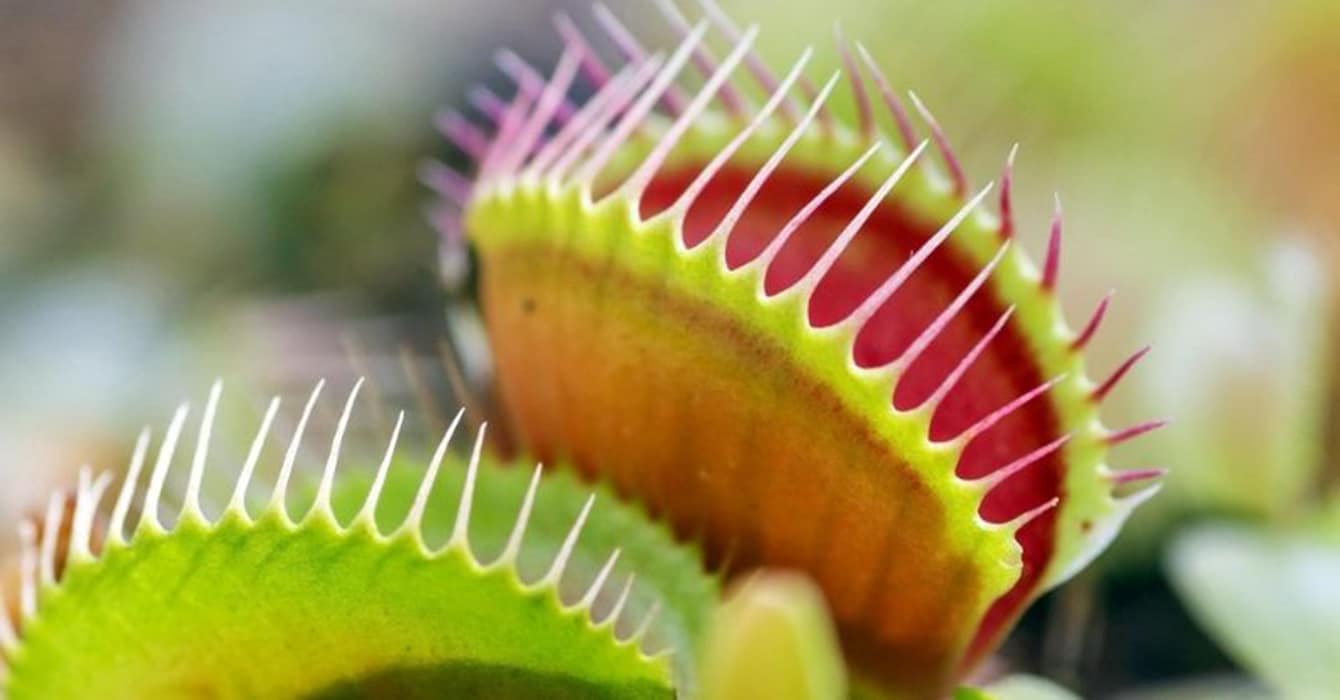
It is very well known that plants emit electrical signals to sense and respond to their environment. Measuring those electric signals could create new opportunities for varieties of applications, including plant-based robots.
However, these signals are too weak and require electrodes to be detected. The hairy, waxy, and irregular surfaces of plants make it difficult for any thin-film electronic device to attach and achieve reliable signal transmission.
Scientists from the Nanyang Technological University, Singapore (NTU Singapore) have overcome this problem by drawing inspiration from the electrocardiogram (ECG). ECG is commonly used to determine heart abnormalities by measuring the electrical activity generated by the organ.
Scientists developed a plant communication device with a 3 mm diameter that delivers electrical signals to and from plants.
Scientists attached a conformable electrode to the surface of a Venus flytrap plant using hydrogel. Doing so, scientists were able to achieve two things: pick up electrical signals to monitor how the plant responds to its environment and transmit electrical signals to the plant, to cause it to close its leaves.
The device is entirely harmless to plants: it doesn’t affect the plants’ ability to perform photosynthesis.
The electric pulses can be transmitted to plants via a smartphone at a specific frequency. When scientists did this with the Venus flytrap, they could elicit the plant to close its leaves on demand.
Scientists noted, “The prospects for the future design of plant-based technological systems, say the research team. Their approach could lead to the creation of more sensitive robot grippers to pick up fragile objects that current rigid ones may harm.”
The lead author of the study, Chen Xiaodong, President’s Chair Professor in Materials Science and Engineering at NTU Singapore, said: “Climate change is threatening food security around the world. By monitoring the plants’ electrical signals, we may detect possible distress signals and abnormalities. When used for agriculture purposes, farmers may find out when a disease is in progress, even before full‑blown symptoms appear on the crops, such as yellowed leaves. This may provide us the opportunity to act quickly to maximize crop yield for the population.”
Scientists now collaborated with scientists at the Institute of Materials Research and Engineering (IMRE), Singapore’s Agency for Science, Technology, and Research (A*STAR), to improve plant communication devices’ performance.
Elaborating on this study, co-lead author Professor Chen Xiaodong said, “The thermal-based material behaves like water in its liquid state, meaning that the adhesive layer can conform to the shape of the plant before it turns into a gel. When tested on hairy stems of the sunflower, for example, this improved version of the plant ‘communication’ device achieved four to five times the adhesive strength of common hydrogel and recorded significantly stronger signals and less background noise.”
Co-lead author of the Advanced Materials study and Executive Director of IMRE, Professor Loh Xian Jun, said: “The device can now stick to more types of plant surfaces, and more securely so, marking an important step forward in the field of plant electrophysiology. It opens up new opportunities for plant-based technologies.”
Journal References:
- Yifei Luo et al. A Morphable Ionic Electrode Based on Thermogel for Non-Invasive Hairy Plant Electrophysiology. DOI: 10.1002/adma.202007848
- Wenlong Li et al. An on-demand plant-based actuator created using conformable electrodes. DOI: 10.1038/s41928-020-00530-4
Continue reading Plant communication: A new device can talk to plants on Tech Explorist.

0 comments:
Post a Comment